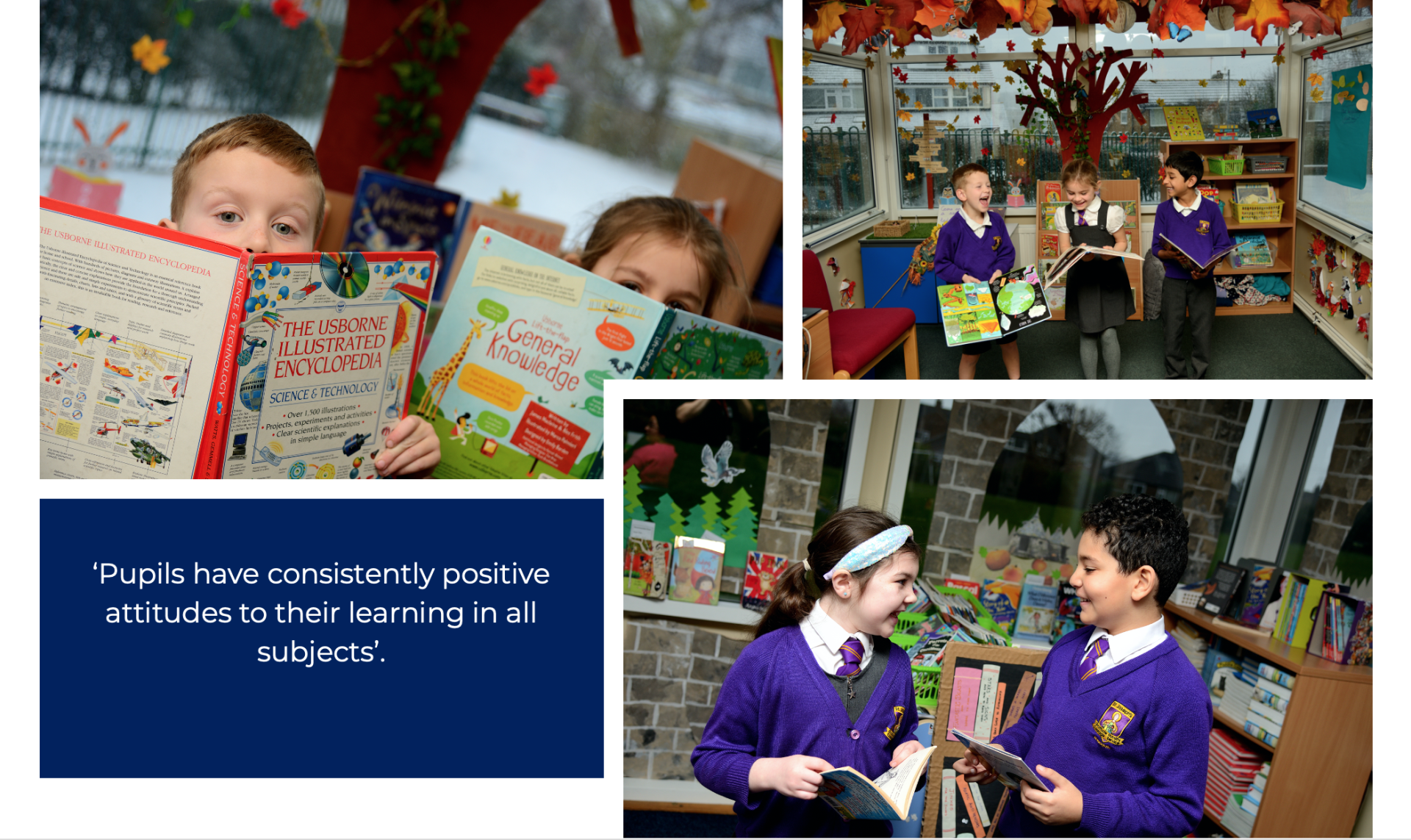English & Phonics

The overarching aim for children within the English National Curriculum is to be able to speak and write fluently so that they can communicate their ideas and emotions to others, and through their reading and listening, others can communicate with them. The curriculum promotes high standards of language and literacy by equipping pupils with a strong command of the spoken and written language, and develops their love of literature through widespread reading for enjoyment.
The English curriculum is split into three areas:
Spoken language
This underpins the development of reading and writing. The quality and variety of language that pupils hear and speak are vital for developing their vocabulary and grammar and their understanding for reading and writing.
Reading (word reading, comprehension)
Reading widely and often increases pupils’ vocabulary because they encounter words they would rarely hear or use in everyday speech. Reading also feeds pupils’ imagination and opens up a treasure house of wonder and joy for curious young minds. We use a variety of resources for guided reading such as Comprehension Ninja, Ashley Booth etc.
Writing (transcription-spelling and handwriting, composition, vocabulary, grammar and punctuation)
Pupils will be taught how to plan, revise and evaluate their writing, following Jane Considine’s Write Stuff. These aspects of writing have been incorporated into the programmes of study for composition. Opportunities for teachers to enhance pupils’ vocabulary arise naturally from their reading and writing. We use Letterjoin to teach cursive handwriting.
English Intent, Implementation, Impact
Grammar and Punctuation Progression Map




